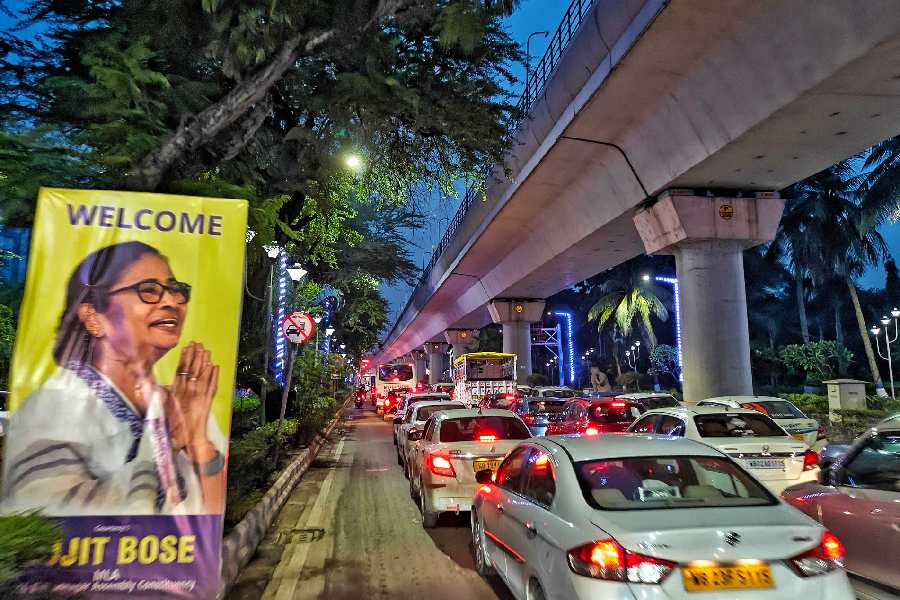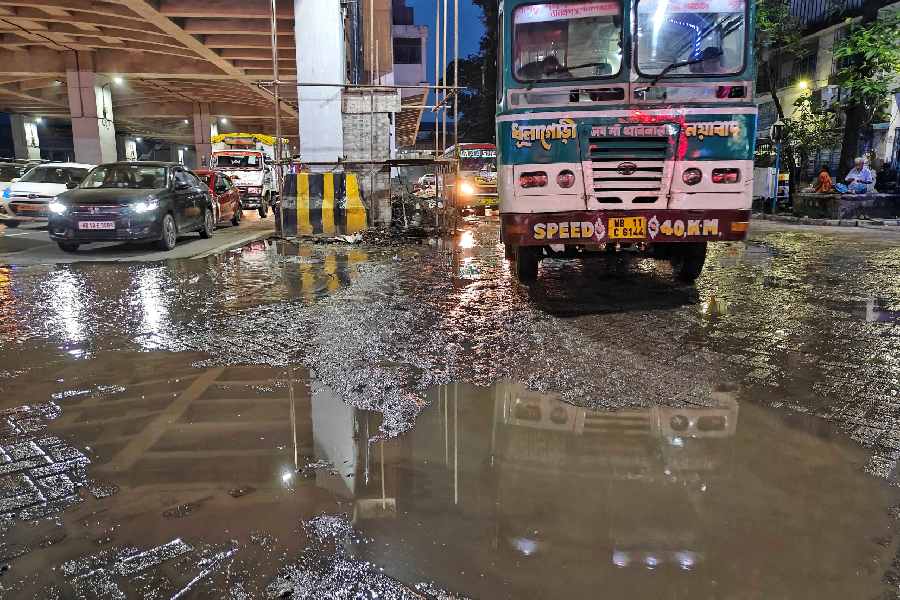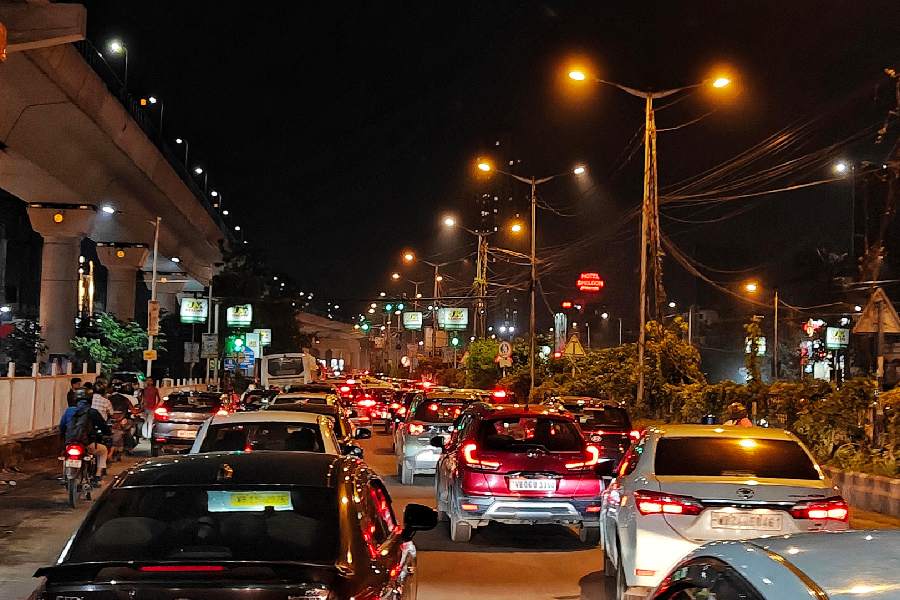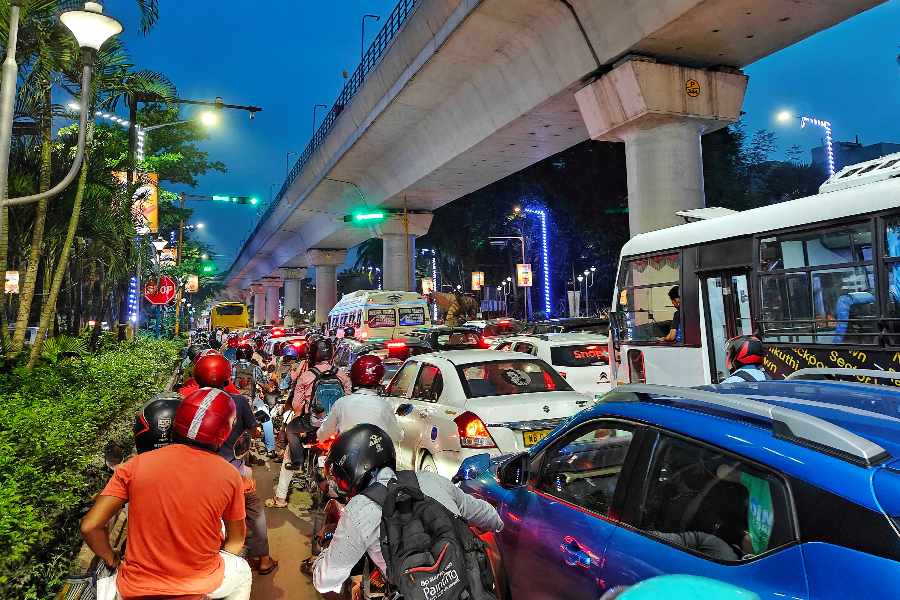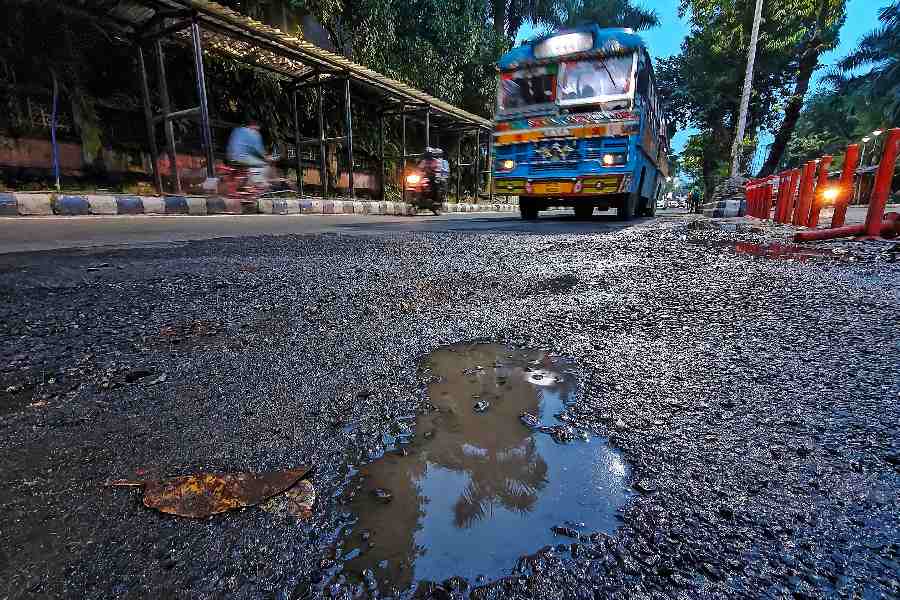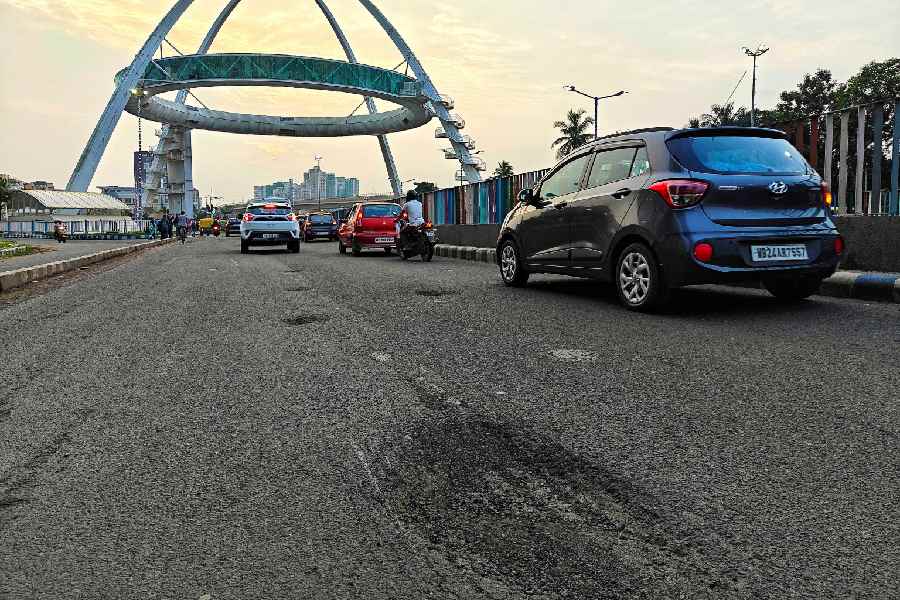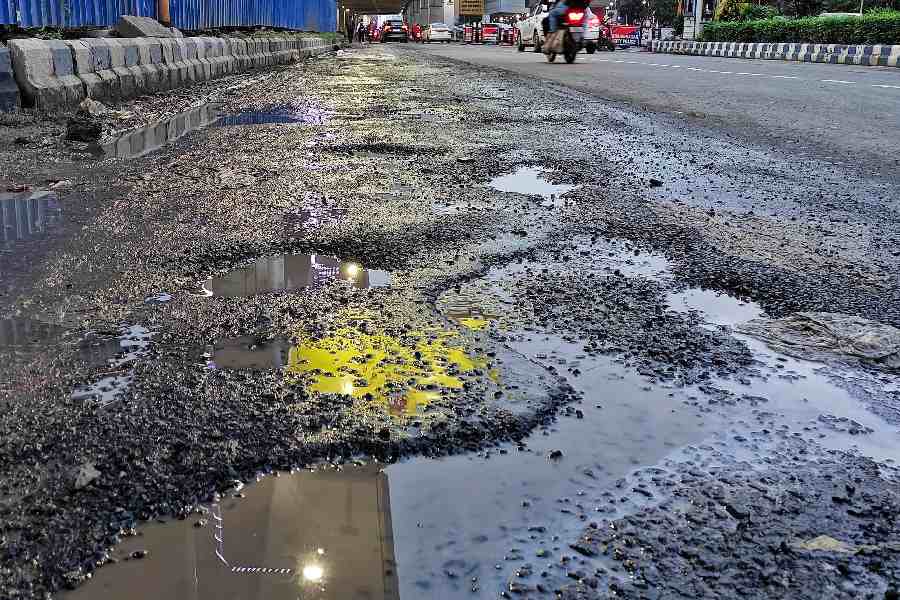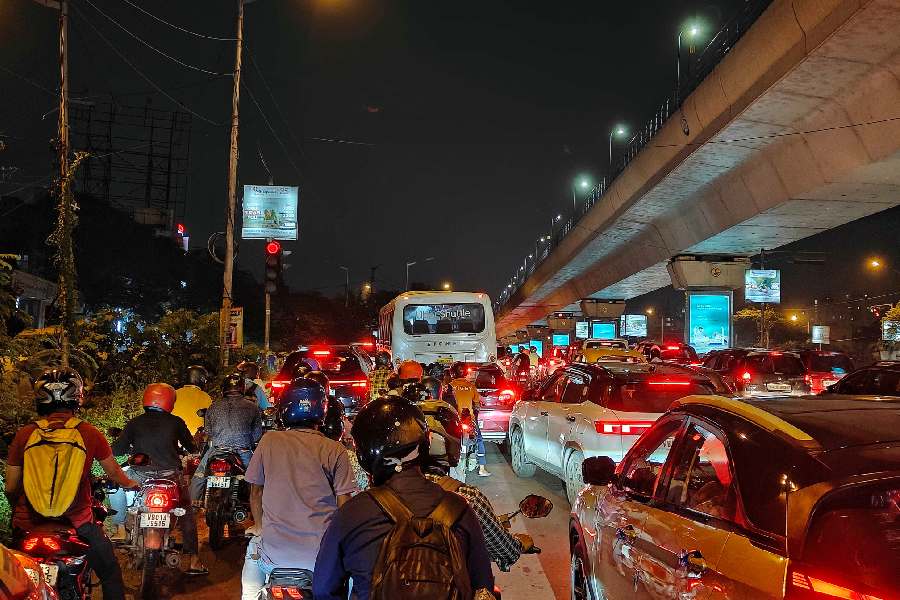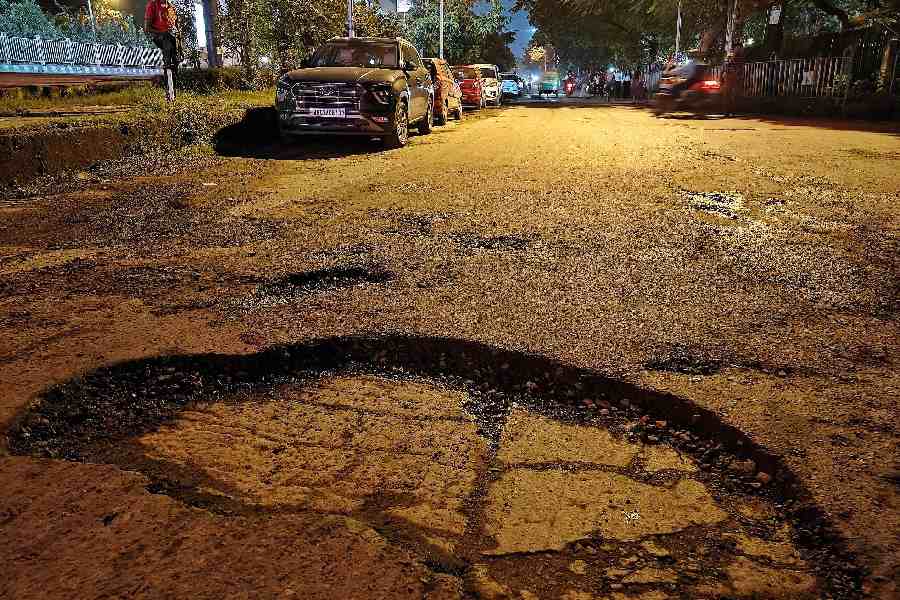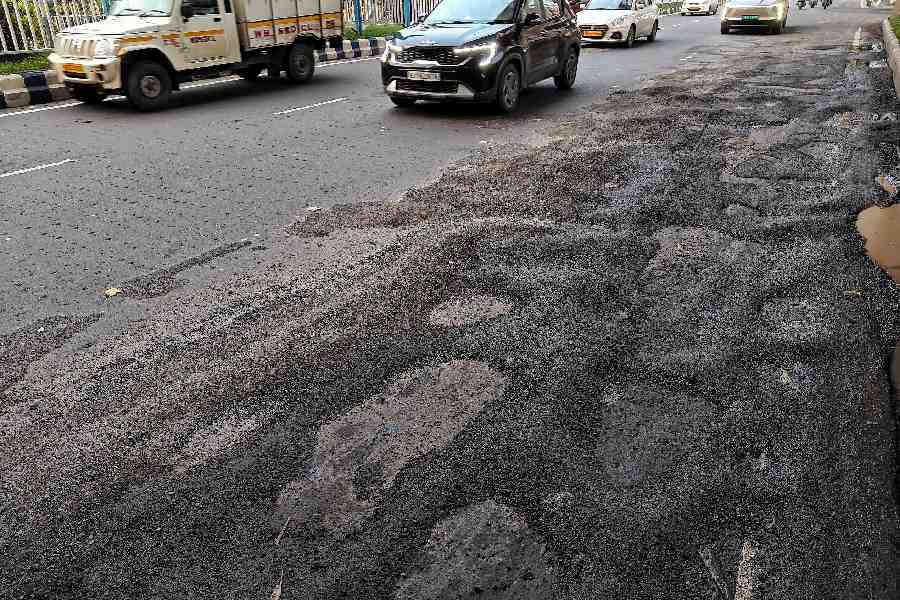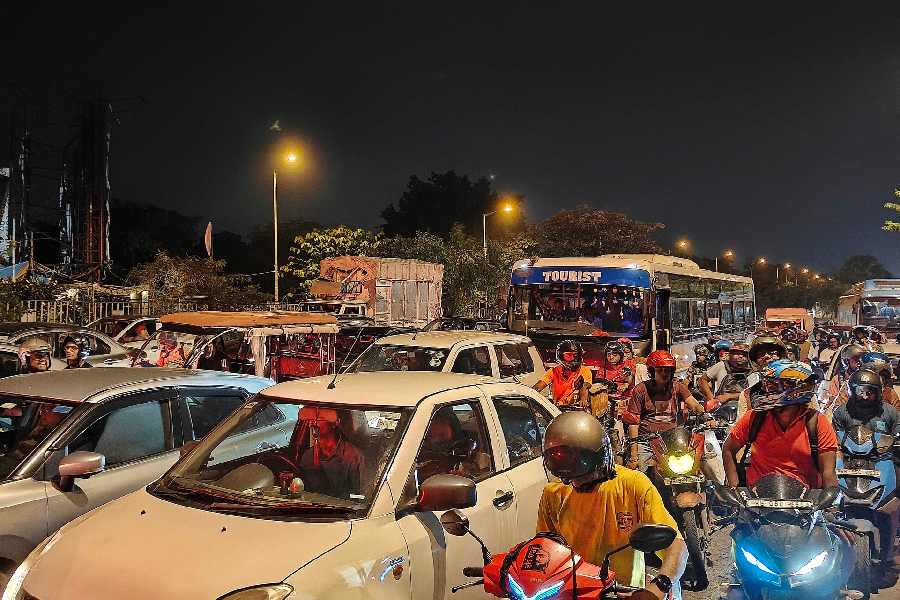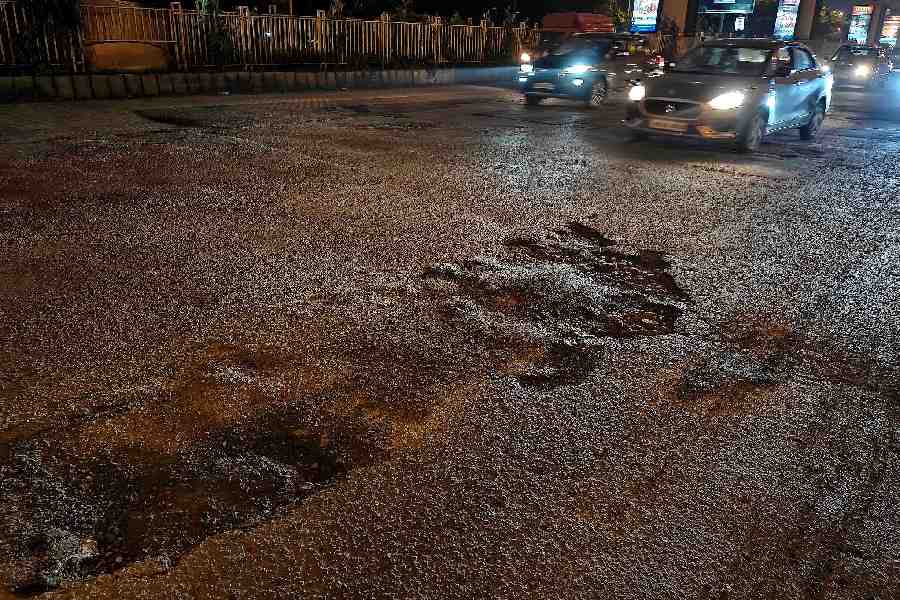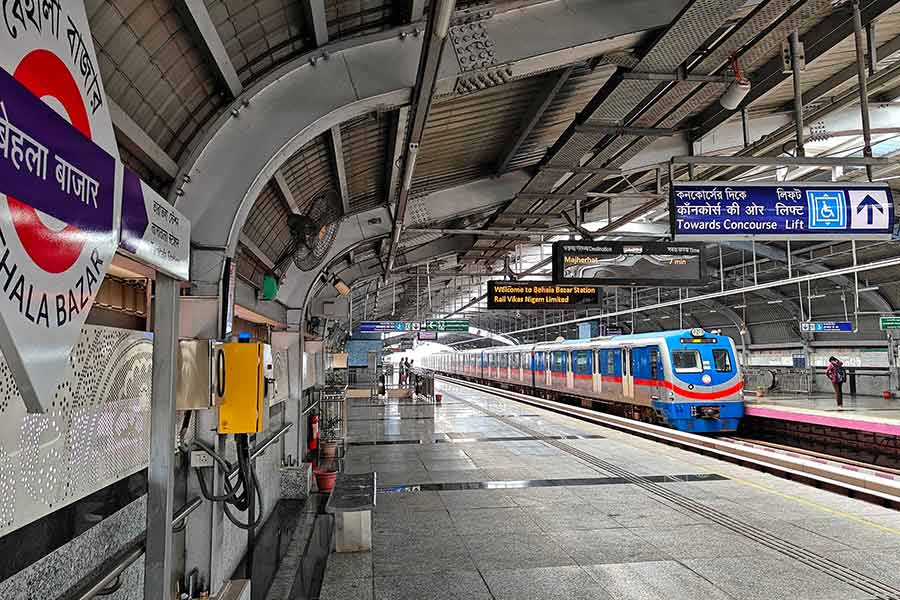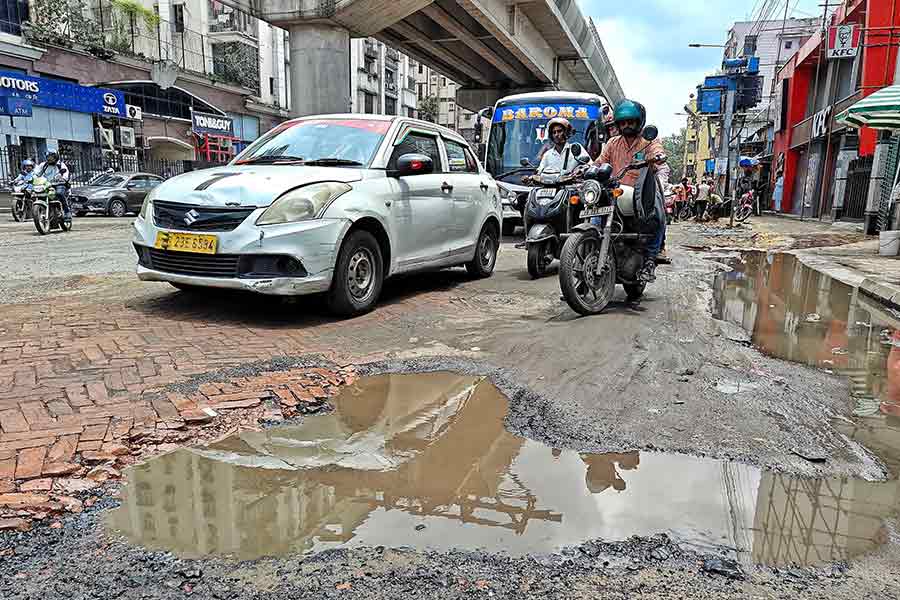On the worst days, the journey to and from Kolkata’s IT hub isn’t measured in kilometres, but in hours. The Chingrighata crossing — the exit route for thousands of office-goers from Sector V — has turned into a bottleneck that frays time and tempers.
“On a normal day, it takes at least 45 minutes just to get from Sector V to Chingrighata. When it rains, it’s well beyond that,” says a commuter who boards a bus from Waterside at 8am. Last week, when heavy rain pounded the city almost daily, that 45-minute crawl stretched into a three-hour ordeal — with the clock ticking towards noon before she could reach home after her night shift.
The misery is shared by professionals across the city’s tech corridor. Suvaditya Majumdar, associate professor at the Institute of Engineering and Management (IEM) in New Town, travels daily from New Town to Garia. His evening shuttle, which should take 90 minutes, now drags on for up to three hours. “The roads in front of Bypass Dhaba, Science City, P.C. Chandra Gardens, and Hiland Park are in a pathetic state, with potholes and ankle- to knee-deep water making every trip a harrowing experience,” he says. “Low-lying vehicles are especially vulnerable, with water seeping in and causing damage.”
The problem is two-fold: traffic congestion and road disrepair. Sector V’s central arteries — from SDF More to Nicco Park and onwards to Chingrighata — are choked during peak hours, with traffic spilling into side lanes as commuters try to dodge the main jams.
“What should take about five minutes takes at least half an hour on a good day, sometimes more,” says Sourav Chatterjee, assistant manager at a fintech firm. “Beyond Science City, there’s congestion again, but thankfully I turn into Topsia. During the rains, potholes were everywhere. Some patchwork has been done, but it’s far from a total fix.”
To understand how bad the route has become, we rode from Ecospace in New Town to Dhalai Bridge in Garia. We left at 5.30pm, hitting Biswa Bangla Gate at 5.50pm. The road was already pockmarked with potholes, but the worst lay ahead. Between Biswa Bangla Gate and Nabadiganta Flyover, both the service and main roads were riddled with craters, forcing vehicles to slow to a crawl.
Entering Sector V brought no relief. Street 27 was clogged with buses, shuttles, and passengers waiting at every turn. Traffic barely moved until the turn towards Nicco Park, with only brief stretches of smooth flow before Chingrighata’s notorious choke point. From there to the EM Bypass, we inched forward through clogged intersections, eventually finding respite only past the Bypass Dhaba — where fresh congestion near Science City quickly erased any gains.
The service road approaching Ruby General Hospital was among the worst segments, with craters large enough to damage a car’s suspension, as was the stretch from Ruby to Avishikta. Past the Prince Anwar Shah connector, traffic grew again, with repair work near Highland Park narrowing lanes. While potholes near the Patuli flyover had been fixed, new ones appeared just metres away, before Dhalai Bridge finally brought an end to the punishing ride at 7.30pm.
For many commuters, these conditions have become routine. “This isn’t about one bad day,” Majumdar points out. “It’s a chronic problem made worse by rain. The lack of proper drainage means water stays on the road, hiding potholes and creating hazards for two-wheelers. Every trip now feels like a gamble between making it home on time and making it home in one piece.”
The recent patch repairs, while welcome, are widely seen as a stopgap measure. “They fix a few spots here and there, but the whole stretch needs resurfacing,” says Chatterjee. “Until then, the traffic jams will stay.” In the meantime, accidents and vehicle damage are on the rise, with commuters swapping stories about bent rims, burst tyres, and soaked interiors.
What makes the situation especially frustrating for office-goers is the lack of alternative routes. The Chingrighata crossing remains the only viable exit from Sector V towards central and south Kolkata. With monsoon rains expected to continue in bursts over the next month, the prospect of relief is slim. “We can only hope our voices are heard,” says Majumdar. “This stretch is too important to be ignored — it’s not just an IT commute, it’s a lifeline.”
For now, that lifeline is frayed and flooded. On paper, it’s a journey of just over 20 kilometres. In reality, for thousands of New Town and Sector V workers, it’s a daily endurance test — one pothole, one traffic snarl, and one rainstorm at a time.
With inputs from Gopanjali Roy and Arnab Das
